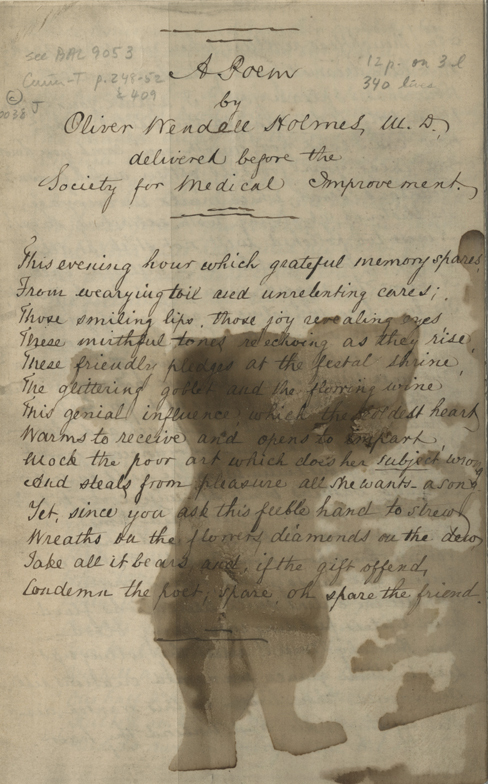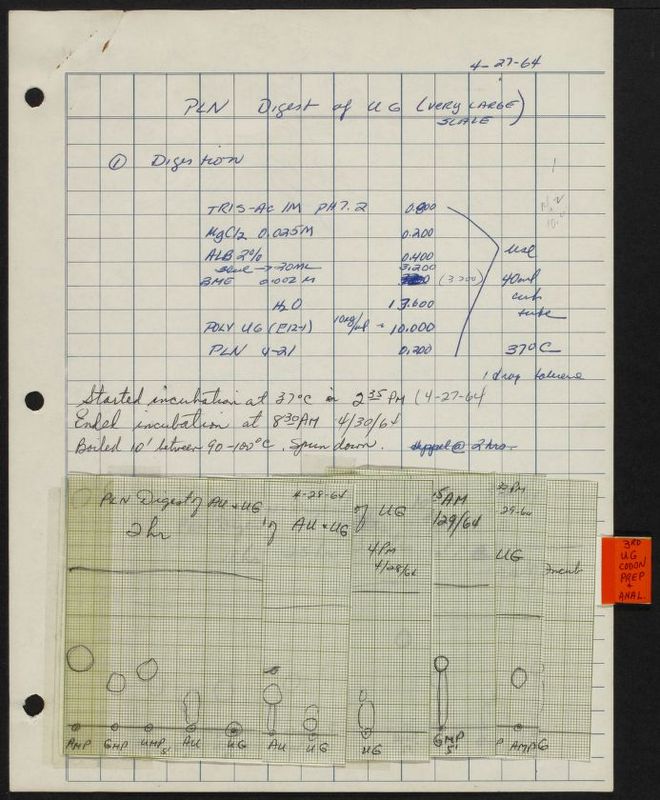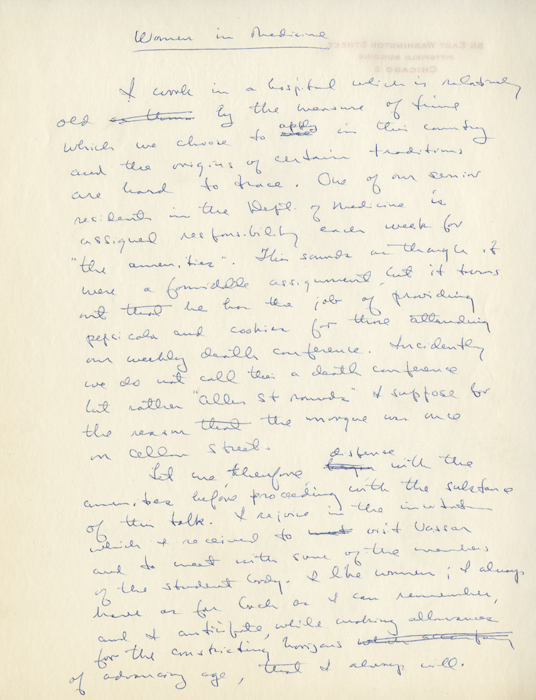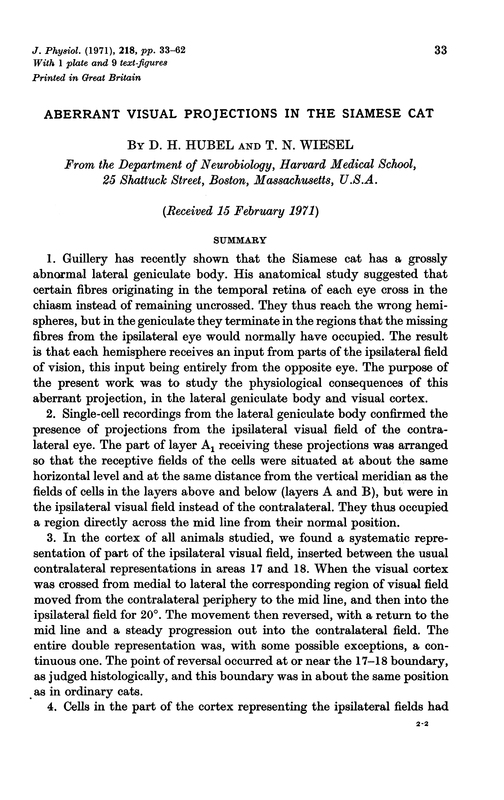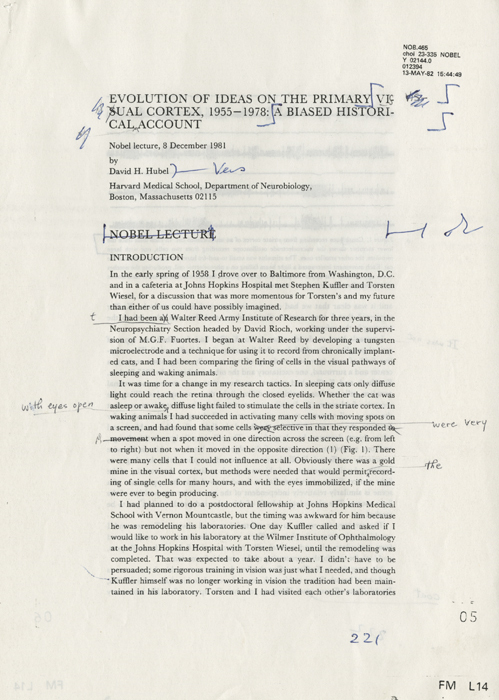Notable Doctors and Scientists
This lengthy poem by Oliver Wendell Holmes—never published during his lifetime—was probably recited at one of the anniversary dinners of the Boston Society for Medical Improvement; Holmes frequently composed and presented his poetic efforts for its celebrations and special occasions. The poem refers to the Society's Pathological Cabinet—its extensive museum collection which was eventually incorporated with the holdings of the Warren Anatomical Museum.
For more on Oliver Wendell Holmes, check out The Scalpel and the Pen.
To complement the oral history interviews of its C. G. Jung Biographical Archive, the Library collects actively in Jungian-related publications, such as this volume of transcripts of a series of lectures on dream analysis and the mind. A revised edition of these addresses, usually known as the Tavistock lectures, was only published widely in 1968, after Jung's death.
These three laboratory notebooks from geneticist Philip Leder (1934- ) were used while he was a postdoctoral researcher working with Marshall W. Nirenberg (1927- ). Leder and Nirenberg developed an experiment in 1964 to allow the mapping of tri-nucleotide sequences, or codons, with amino acids, and help to decipher the genetic code.
All three codons notebooks have been fully digitized and are now freely available to researchers through the HOLLIS catalog, here.
Soon after his appointment as Dean of Harvard Medical School, though before he assumed that office, Robert Higgins Ebert (1914-1996) delivered this address at Vassar, at that time still a women's college. Ebert states, "I believe in education for women, and I believe in equal opportunities for women in the learned professions as well as some which are not so learned. I believe that women can do everything that men can do as well as one or two things which in spite [of] considerable ingenuity men have never quite been able to accomplish."
A large collection of Dr. Ebert's professional and personal papers, as well as archival records from his tenure as Dean of the Harvard Medical School, are all preserved in the Countway and available through its Center for the History of Medicine.
Dr. Brazelton, professor of pediatrics at Harvard Medical School and founder of the Child Development Unit and Brazelton Center for Infants and Parents at Childrens Hospital, created the Brazelton Neonatal Behavioral Assessment in 1973 to analyze the development of newborns and infants. Dr. Brazelton said, "We are learning to look at the baby's individual differences. He not only sees, hears, responds overtly, but he can tell what he likes and doesn't like, what his personality will be. This all starts about the fifth month, in the uterus. That is why it is so important to observe the premature infant."
Fred Rogers of Mister Rogers' neighborhood, here thanks Dr. T. Berry Brazelton for his participation in a 1990 documentary, Our neighbor, Fred Rogers, celebrating his life and contributions to children's television. At Rogers' death in 2003, Dr. Brazelton said, "What a loss to the world. He talked to kids at the ages of 4 to 6 about feelings. That's the age when they begin to realize they have an effect on their world."
In 1981, Harvard researchers David H. Hubel and Torsten N. Wiesel shared the Nobel Prize in Medicine with Roger W. Sperry of Caltech for their discoveries relating to information processing in visual systems. This article on the Siamese cat, published in the Journal of physiology, v. 218 (1971), was one of a number of articles describing the research of Drs. Hubel and Wiesel.
The Center for the History of Medicine at the Countway preserves the professional and personal papers of a number of Harvard's Nobel laureates, with significant collections from Drs. George Richards Minot, William Parry Murphy, Thomas Huckle Weller, and Joseph E. Murray, in physiology and medicine, and Dr. Bernard Lown and the other cofounders of the International Physicians for the Prevention of Nuclear War, who received the Nobel Peace Prize in 1985.
This is a typescript copy of David H. Hubel's Nobel lecture, Evolution of ideas on the primary visual cortex, presented in 1982.

